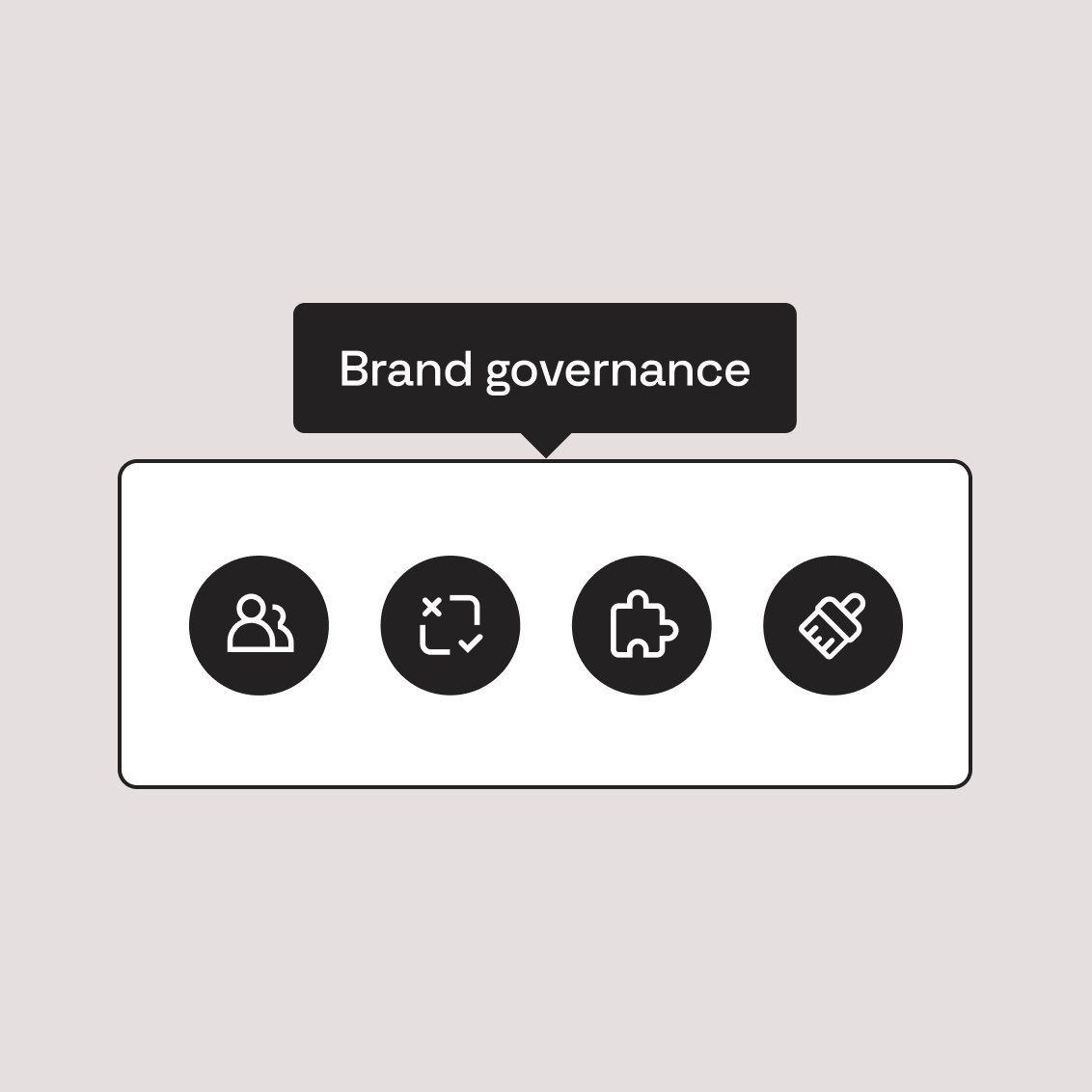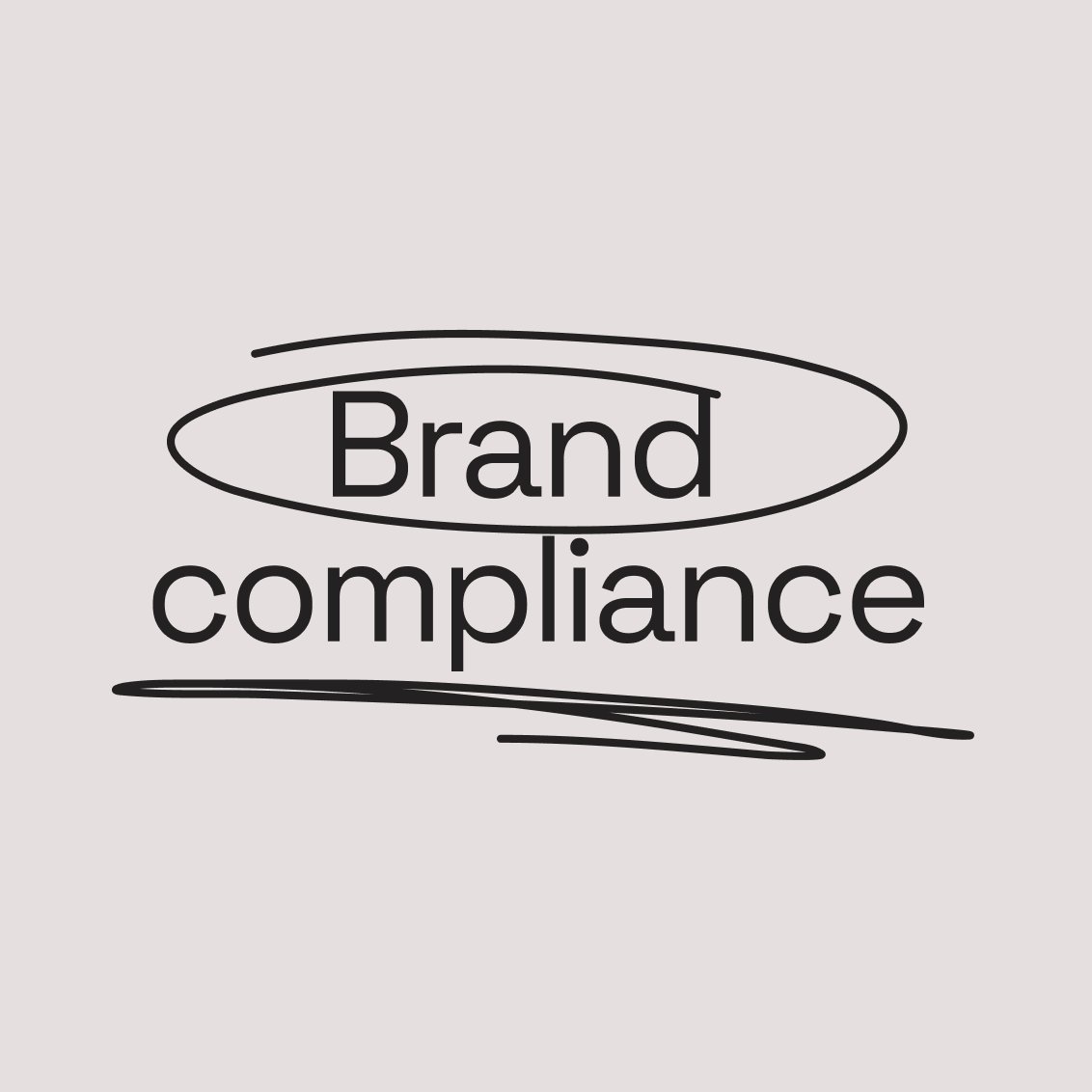Without effective brand governance, inconsistent visuals and messaging dilute your company’s brand identity. According to 28% of senior professionals at mid-sized and large companies, brand dilution costs their business more than $10M in lost revenue each year. Brand inconsistencies aren’t just a marketing problem — they’re a business problem.
So, you need to make it easy for everyone to understand the brand, and the resources available, to help them engage with it.
Your brand governance framework helps with that.
What is a brand governance framework?
A brand governance framework guides your brand’s standards, processes, and resources and keeps everyone informed and engaged.
The purpose of a brand governance framework is to help everyone in your organization understand the following:
- How their role or department contributes to the brand
- Whom to go to for support with brand-related questions or challenges
- The process for providing feedback to strengthen and develop the brand
- The resources and training available to help them create and use brand materials in their work
The document gives internal team members all the tools and know-how they need to properly represent your brand — no matter their job role — promoting a consistent brand identity.
What should your brand governance framework cover?
While your brand governance framework helps your team understand your brand, it shouldn’t be used to document your brand identity or share guidelines for using different assets. Instead, a brand governance framework should cover four key areas to help people engage with your brand.
1. People
Your brand governance framework enables employees to help each other engage with your brand. So, the most important part of your framework focuses on the people in your organization and maps out their contribution and relationship to your brand.
Your brand governance framework should cover the following elements:
- Department responsibilities: You need to define how each department represents your brand and to whom. For example, your sales department communicates your brand vision and values to potential customers, while your support department represents your brand when communicating with existing customers.
- Brand champions: Each department should have at least one brand champion who really “gets” your brand. These ambassadors can explain the brand to their teammates and help them find and use different brand assets in their work.
- Brand department overview: If your company has a dedicated brand department, your brand governance framework should define the department’s roles and responsibilities, such as the type of branded assets they’ll create, review, or approve. That helps other departments understand their own responsibility for creating brand materials and when they should go to the brand department for help.
The people-focused part of your brand governance framework helps your team understand when to create their own brand materials and when to escalate requests to others closer to your brand. It allows employees to support each other, as team members know whom to go to for approvals of important assets and brand-related questions.
The framework also helps your brand department. It changes their focus from “brand policing,” where they get asked to review every asset — from logo usage to email copy. Instead, they can focus on developing a shared sense of brand ownership throughout the company, which is essential for developing a strong, consistent brand.

2. Processes
Besides helping people understand how they contribute to your brand, your brand governance framework explains some of the important processes for creating, updating, and managing your brand.
Your brand governance framework should include the following elements:
- Approvals process: If any team member creates new branded materials or brand assets, what steps must they follow to get the work reviewed and approved for publication? Are there different processes for different teams or asset types? Your framework answers such questions so everyone in the business knows the steps they need to take to create and use brand materials in their own work.
- Process for requesting design support: While teams have to be empowered to create their own branded materials and assets, they don’t always have the skills to create what they need. Provide guidance on the types of assets the design team can help with and the process (including expected turnaround times) for requesting design support for high-stakes or complex brand materials.
- Brand updates process: Your brand will evolve, so you’ll likely update your brand guidelines and resources to reflect them. Your brand governance framework explains the process for updating the brand and communicating changes to the rest of the company.
- Feedback process: Your team may have feedback or ideas about the brand based on interactions with customers, prospects, or other relevant audiences. Map out the process for sharing feedback with the brand department so everyone in the business can contribute to its development and future direction.
Sharing these processes helps to avoid internal confusion: Everyone follows the same steps and works from the same guidelines, which helps improve brand consistency within the business.
By including these important processes in your brand governance framework, you help your team stay engaged and on-brand, as they know how to share feedback, collaborate on projects, and request brand support from other departments if they need it.

3. Training and resources
Access to relevant and up-to-date training and resources helps your teams improve consistency when they use branded assets or represent the brand. When your brand governance framework covers training and resources, you’ll help your team members familiarize themselves with the brand.
The training and resources section of your brand governance framework should include the following elements:
- Information about formalized brand training: Your framework should explain when employees will receive formal training related to the brand — for example, as part of new employee onboarding, during a company rebrand, or when you release new brand assets.
- Links to resources to help people learn about your brand beyond formalized training sessions: People who only use brand materials occasionally may be happy with your formal brand training sessions. Power users and brand champions may want to learn more about the brand. Share additional resources such as tutorials from your design department, creative templates for frequently used brand assets, and brand guidelines for global and local markets.
Adding training and resources to your brand governance framework ensures everyone in your team knows when and how they can learn more about the brand.
Mapping out the resources also empowers employees to get refreshers on certain topics if they need them. They know where to look for brand-related information and resources, so they can help themselves (or their team) without needing to ask your brand department every time.

4. Tools and technology
The final part of your brand governance framework should cover tools and technology. This section will help people use the right resources for different brand-related tasks — from creating branded assets to storing them.
Different companies have their own tool and tech stack, and here are some example tool types to include in your brand governance framework:
- Brand management platform: This is typically the home for everything brand related at your company. It’s the centralized place to store your guidelines, templates, and assets, so if you use one, it’s likely to be the most important and helpful tool for anything to do with your brand.
- Design tools: Specify the tools your team uses for designing different assets. This could include software like Adobe Creative Suite or Sketch. For example, at Frontify, we use Pitch for our branded presentations and provide information about it on our Brand Home.
- Tools for storing and organizing brand assets: This will help employees find and use existing brand assets rather than make their own. Some companies use a shared drive, but a digital asset management tool is more helpful for storing and organizing brand materials, as it connects with other design tools and your brand guidelines.
Including tools and technology in your brand governance framework is another way to ensure consistency across your team. If everyone uses the same software to create, store, and share brand materials, you won’t run into file incompatibility problems or inconsistencies coming from importing files from one tool to another.
Additionally, sharing information on tools and technology is another way to build your team’s confidence and empower them to work with your brand materials. Employees will know how to find and access different materials, the tools they can use to create their own assets, and what tool best meets their needs.

Create your own brand governance framework
Effective brand governance helps companies of all sizes overcome common branding challenges such as creative inefficiency and inconsistency. A brand governance framework helps improve internal awareness and education about your brand.

